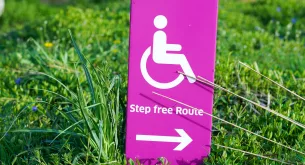
Image: Pexels
South Africa’s Department of Health has issued a cautionary alert urging travellers and local populations to stay alert following a rise in malaria infections across South Africa’s Limpopo, Mpumalanga, and KwaZulu-Natal provinces.
Officials also highlighted that neighbouring countries within the Southern African Development Community (SADC), such as Mozambique, Zimbabwe, Botswana, Namibia, and Eswatini, are also experiencing outbreaks, heightening concerns about cross-border spread.
Ahead of the long weekend, the advisory noted that heightened regional travel during the Easter period—driven by holiday gatherings, religious observances, and cultural activities—could escalate transmission risks of the disease.
The Department of Health has reiterated the critical need for individuals visiting malaria-prone areas to adopt preventive measures.
#MalariaControl [VOICENOTE] Foster Mohale Department’s Spokesperson
The Department of Health would like to urge all travellers and communities to remain vigilant of malaria disease as the country is recording a slight increase in malaria cases. https://t.co/QVvsXJyJTv pic.twitter.com/U57slDUAXB
— National Department of Health (@HealthZA) April 16, 2025
ALSO READ: Tips for travelling with a disability
Know the signs and symptoms of malaria
- High fever (often cyclical, with chills and sweating)
- Chills and rigours (intense shivering)
- Headaches (severe or persistent)
- Muscle aches and fatigue
- Nausea, vomiting, or diarrhoea
- General malaise (feeling unwell)
- Jaundice (yellowing of skin/eyes) in severe cases
- Confusion, seizures, or coma (indicative of severe cerebral malaria).
Seek immediate medical care if symptoms develop, especially after travel to malaria-prone areas.
ALSO READ: How to choose the right hiking trail for your fitness level
Preventative measures before and after travelling to malaria areas
Before travelling to a ‘malaria area’, consult a healthcare provider for malaria prophylaxis (preventive medication) tailored to your destination.
Before you leave, pack the following:
- Antimalarial drugs as prescribed by a healthcare provider
- Insect repellent containing at least 10% DEET
- Long-sleeved clothing
When visiting malaria areas in Southern Africa, ensure that you:
- Apply repellent to exposed skin and clothing.
- Wear light-coloured, long sleeves/pants during dusk/dawn (peak mosquito activity).
- Sleep under bed nets in high-risk areas.
- Stay in air-conditioned or screened accommodations.
- Avoid stagnant water (mosquito breeding sites).
Once you arrive back home:
- Complete your prophylaxis course as prescribed.
- Monitor for symptoms for up to 3–6 months post-travel.
Additional tips:
- Pregnant women, young children, and immunocompromised individuals are at higher risk—take extra precautions.
- Use fans or coils to deter mosquitoes indoors.
Follow us on social media for more travel news, inspiration, and guides. You can also tag us to be featured.
TikTok | Instagram | Facebook | Twitter















